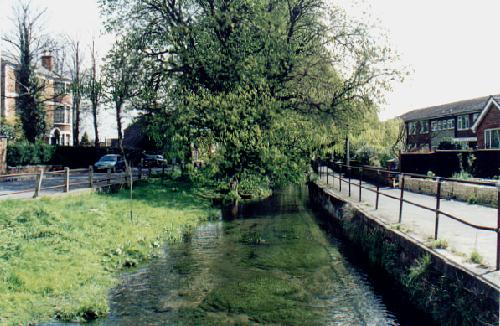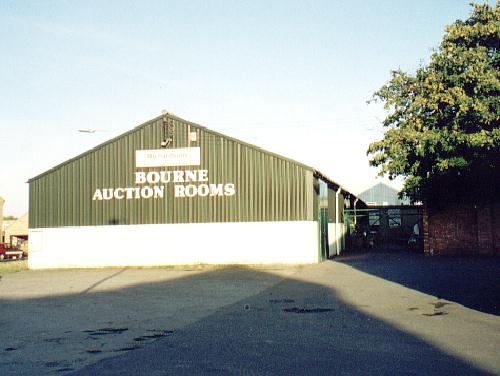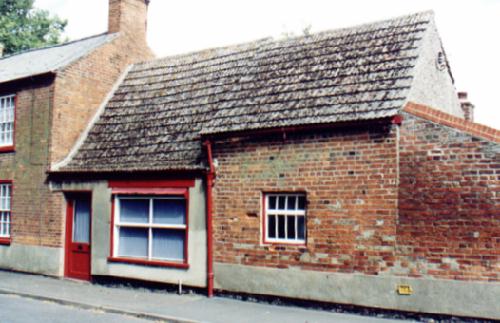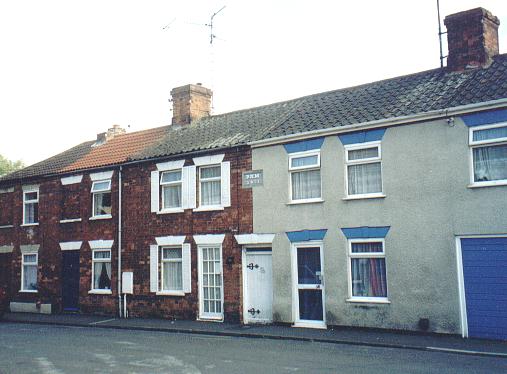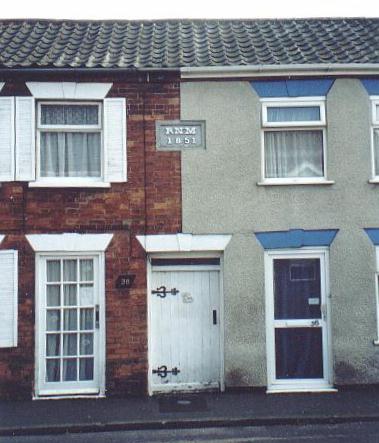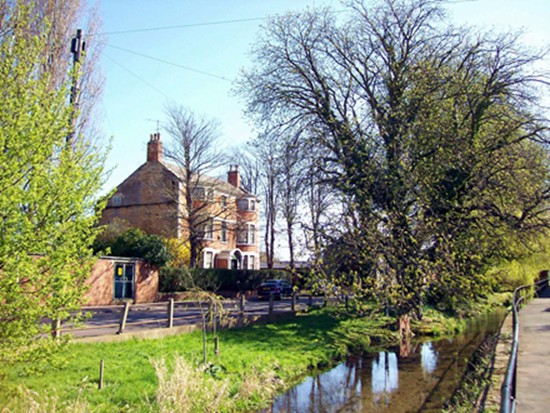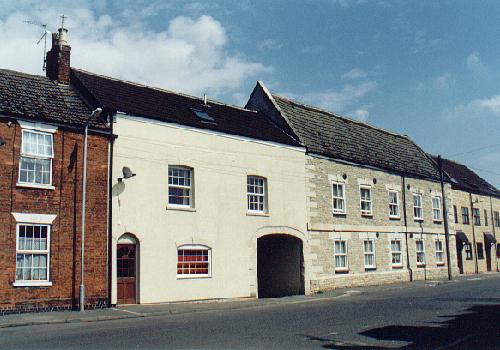|
Eastgate
The Bourne Eau disappears underground in many places as it crosses the town but surfaces here, below the Queen's Bridge at the head of Eastgate that is tucked away in the side streets off the Spalding road and there are several public footpaths that cross and recross the river as it runs through the district. This is one of the oldest areas although there are no properties in Eastgate that pre-date 1637 when fire engulfed most of the street and also marked the end of the pottery industry that had thrived in the area, destroying kilns, storerooms and homes. Excavations in 1973 unearthed evidence of this industry.
Notley's Mill stood beyond the bridge in Victoria Place, the last surviving working mill in the area that was grinding corn until it was demolished in 1973. The large red brick house on the left was the lifetime home of the motor racing pioneer Raymond Mays and the racing cars he produced were built in workshops behind the house although these premises are now the home of the Bourne Auction Rooms. The mansion was built on the north bank of the river in Eastgate in 1796 and this date can be found above the back door in the yard. The elegant 19th century brick frontage was grafted on to a large extension of the original stone building with its own well in the kitchen. Raymond Mays was born here on 1st August 1899 and was still living here when he died on 6th January 1980. A metal plaque on the front wall records his achievements.
Worth Court stands nearby, a block of maisonettes for the elderly named after another famous son of the town, Charles Worth, the celebrated international fashion designer.
A small shop further down the street was once a thriving butchery but is now empty and disused. Earlier this century it was owned by Mr T A King and when he retired, his assistants Eric Pick and Harry Sardeson bought it and invited Norman Sandall to join them and it became Pick, Sandall and Sardeson. Pick and Sardeson retired in the 1960's and the business is now N L Sandall and Sons and has been so successful that it has expanded into more spacious and imposing premises in the town's main West Street.
An ancient inn stands near what used to be the Eastgate quayside. This is the Anchor, one of the town's oldest hostelries, and it was once frequented by boatmen plying their trade on the Bourne Eau. Barges would have turned around here in the 19th century in the days when the river was navigable. Coal supplies for the town came in by water and in the early part of the century there was a portion of the riverside in Eastgate known as the coal yard or coal wharf and it lay on the north bank of the Bourne Eau, just below the Fen Bridge. Other goods were also moved by boat from this location and a directory of 1857 announces: "Conveyance by water to Nottingham and Spalding, Thomas Knott's boats, from Eastgate occasionally."
There was another public house
at No 32 Eastgate, the Butcher's Arms, that was destroyed when a German bomber crashed
into it during the Second World War. Eastgate was also the focal point of the town's fellmongery founded in the early 19th century by John Rate and taken over in 1842 by William Mays whose family expanded the business considerably. His son, also Thomas, bought the nearby fellmonger's yard from John Lely Ostler in 1863 and by the turn of the century, the firm of wool merchants and fertiliser manufacturers was well established and prospering, including the tannery that handled the skins from dead livestock. The firm became known as T W Mays and Sons Ltd and continued in operation until 1980.
REVISED MARCH 2015
See also Queen's Bridge Eastgate House Worth Court
Notley's Mill Eastgate in past times The Eastgate plane crash
Go to: Main Index Villages Index |
||||||||||||||||||||||||
